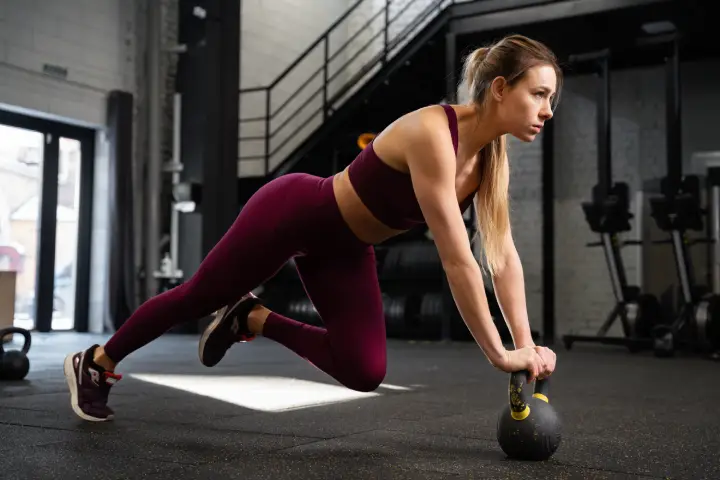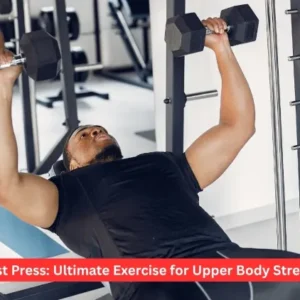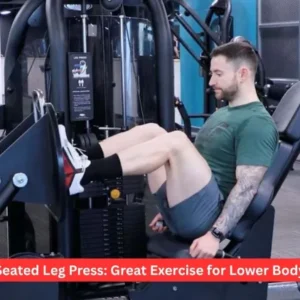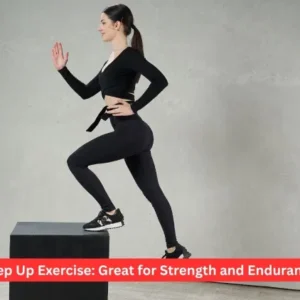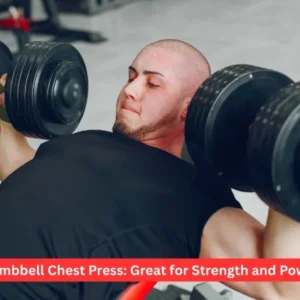One of the best ways to increase lower body strength, power, and endurance without using large, cumbersome gym equipment is to perform kettlebell leg exercises. They work your core and cardiovascular system while targeting your quadriceps, hamstrings, calves, and glutes. Kettlebell training, which includes everything from goblet squats and lunges to explosive swings and step-ups, can tone your legs, enhance your balance, and even take the place of conventional gym exercises. In a few weeks, you can noticeably improve your strength, muscle tone, and fat loss with the correct consistency.
Why Choose Kettlebell Leg Exercises?
Many people believe that squats and heavy barbells are the only ways to build strong, toned legs. Kettlebell leg exercises, on the other hand, offer a more practical, adaptable, and joint-friendly method.
- Complete Activation of the Lower Body: All of the main muscles, including the quadriceps, hamstrings, calves, and glutes, are worked out with kettlebells.
- Training for Core and Stability: Every lift calls for balance, which fortifies your stabilisers and abs.
- Cardio + Strength Combo: Intense exercises like kettlebell swings increase heart rate, which makes them both cardio and strength-based.
- Minimal Equipment: One kettlebell can take the place of several weights and machines.
- Real-World Carryover: By simulating everyday tasks like lifting, climbing, and running, the movements enhance athleticism.
When done with intensity, even brief sessions—such as a 20-minute kettlebell workout—are sufficient to tone legs, gain muscle, and burn fat.
Best Kettlebell Leg Exercises
The best kettlebell leg exercises for building muscle and strength are listed here.
1. Goblet squat with kettlebells
- the basis for every leg exercise with a kettlebell.
- Keep the kettlebell near your chest.
- Maintaining a straight back and an elevated chest, squat down.
- To stand again, push through your heels.
Benefits: Increases core stability, glutes, and quadriceps. Excellent substitute for people who are afraid of barbell squats.
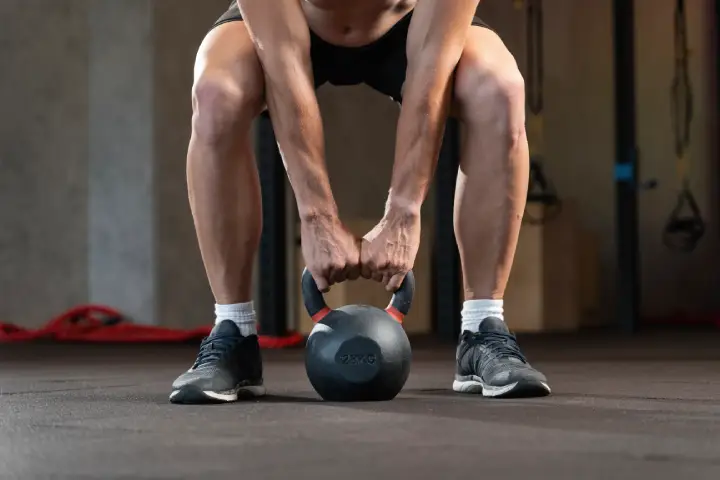
2. Kettlebell Deadlift
ideal for building stronger glutes and hamstrings.
- The kettlebell should be placed between your feet.
- Grasp the handle with your hips, then raise with a flat back.
- Squeeze your glutes and stand tall.
Benefits include strengthening the posterior chain, promoting explosive movements, and improving posture.
3. Kettlebell Swing
The most famous kettlebell exercise, which blends strength and cardio.
- Place the kettlebell on the ground to begin.
- Push your hips forward after swinging it back through your legs.
- Allow the kettlebell to rise to chest height on its own.
Benefits: When done regularly, it strengthens hamstrings, flattens the stomach, tones legs, and develops glutes. Because swings burn fat, many fitness experts say they can even take the place of traditional cardio sessions.
4. Kettlebell Lateral Lunge
A side-to-side motion to improve mobility.
- Keep the kettlebell in the goblet position.
- Bend your knee while maintaining a straight other leg as you take a wide step to one side.
- Return to the center and switch sides.
Benefits: Increases flexibility while targeting the inner thighs, hips, and quadriceps.
5. Kettlebell Step-Ups
a single motion to correct muscular imbalances.
- In each hand, hold a kettlebell.
- Use one leg to step onto a box or bench.
- Repeat on the opposite side after lowering gradually.
Benefits: Helps runners and athletes by improving single-leg strength and coordination.
6. Kettlebell Bulgarian Split Squat
One of the most difficult leg exercises with a kettlebell for significant growth.
- On a bench, place one foot behind you.
- Keep kettlebells close by.
- Push yourself back up after lowering your front leg into a squat.
Benefits: Helps bulk up legs without the need for traditional squats by isolating the quadriceps and glutes.
7. Kettlebell Clean to Squat
A power move that combines two exercises into one.
- In the rack position, swing the kettlebell and “catch” it.
- Then do a squat.
- Repeat after lowering.
Benefits: Enhances athletic coordination, strength, and explosiveness.
8. Kettlebell Calf Raises
An underappreciated lower-leg finisher.
- Keep kettlebells close by.
- Raise your heels off the ground, then take a moment to slowly lower them.
Benefits include increased ankle mobility, calves’ strength, and support for jumping and running.
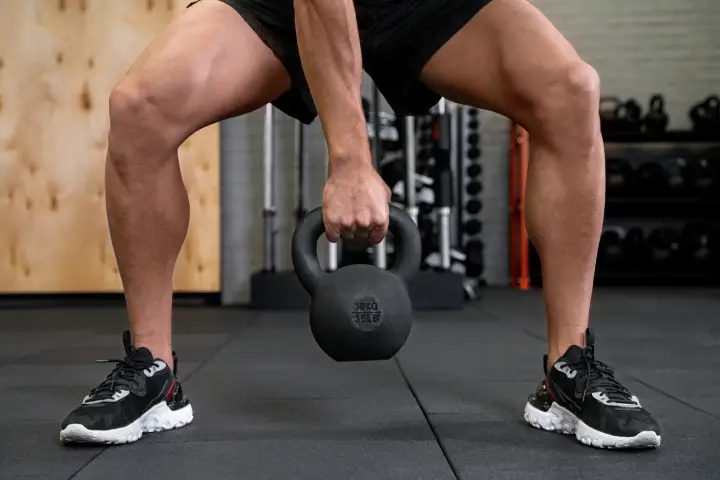
Sample Kettlebell Leg Workout (20 Minutes)
This is a friendly routine for beginners to intermediates:
- Three sets of twelve reps for the goblet squat
- Deadlift: three sets of ten repetitions
- Kettlebell Swing: 3 sets of 15 repetitions
- Bulgaria Split Squat: 3 sets of 8 repetitions per leg
- Three sets of twenty reps for calf raises
This is a quick but very powerful workout. Kettlebell leg exercises, even for just 20 minutes a day, can help you burn calories, tone your legs, and strengthen your glutes.
Benefits of Kettlebell Leg Exercises
Building a balanced, athletic physique is the goal of kettlebell training, which goes beyond simply increasing leg size.
Muscle Growth: Exercises like Bulgarian split squats and goblet squats can help build muscle in the hamstrings and quadriceps.
Glute Development: The glutes are specifically targeted by kettlebell swings and deadlifts, which aid in their growth and lifting.
Waist Shaping & Fat Loss: Over time, high-rep swings flatten the stomach, reduce waistlines, and burn calories.
Mobility & Stability: Lateral movements and lunges increase flexibility and reduce the risk of injury.
Athletic Performance: Power and speed are developed through explosive swings and cleans.
Many people see noticeable improvements in their stamina, firmer glutes, and leaner legs after 4–6 weeks of regular training.
Common Mistakes to Avoid
When performed properly, kettlebell exercises are safe, but these errors are frequent:
- causing injury by rounding the back during deadlifts or swings.
- Swinging with arms rather than hips requires the hips to provide the power.
- Selecting excessively heavy weights before perfecting technique.
- lunges or shallow squats that reduce efficacy.
- Swings that are overtrained without balancing with other movements can cause lower back fatigue.
Making form corrections guarantees improved outcomes and reduces the risk of injury.
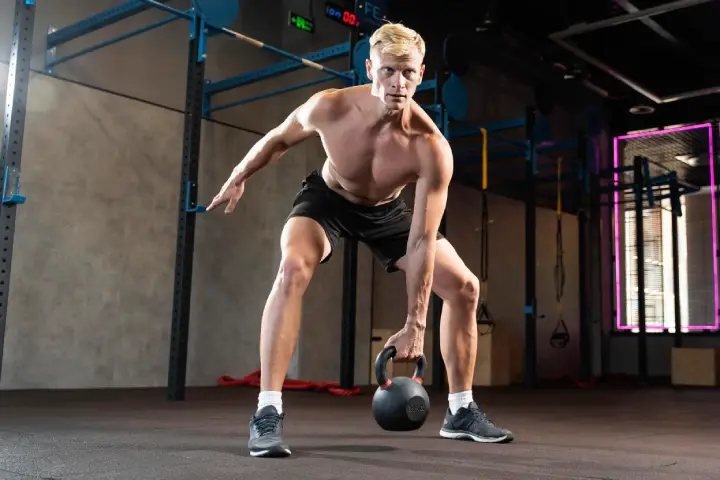
Final Thoughts
Anyone who wants to develop strong, toned, and athletic legs can do so with kettlebell leg exercises. Kettlebells can help you achieve your goals of toning your legs, flattening your stomach, building muscle, and increasing your endurance. You can improve your fitness, increase your metabolism, and tone your lower body by simply performing 50 to 100 kettlebell swings each day.
Kettlebells, as opposed to conventional machines, offer practical strength that is applicable in everyday situations. They can take the place of aerobic workouts, be used in addition to squats, or even be your primary training aid. Kettlebell training can change the shape of your legs, glutes, and waist in a matter of months if you’re consistent and increase the weight and repetitions gradually.
A powerful body is built on strong legs, and kettlebells make the journey both efficient and pleasurable.
Frequently Asked Questions
1. Is the kettlebell leg exercise a substitute of the gym machines?
Yes, kettlebell leg workouts make you stronger, and muscular, and more enduring and provide an excellent alternative to the large gym gear.
2. What are the frequency of kettlebell leg exercises?
Regular training 3-4 times a week will give you stronger legs, tightened glutes and the loss of fat within 4-6 weeks.
3. Are kettlebell swings considered as cardio and strength training?
Absolutely! Kettlebell swings will raise your heart rate to cardio train and hamstrings, glutes, and core to build strength.
4. What is the most appropriate kettlebell weight to use in leg exercises?
Novices must begin with 812kg and more advanced lifters can lift 1624kg so that they can gain strength and muscle safely.

